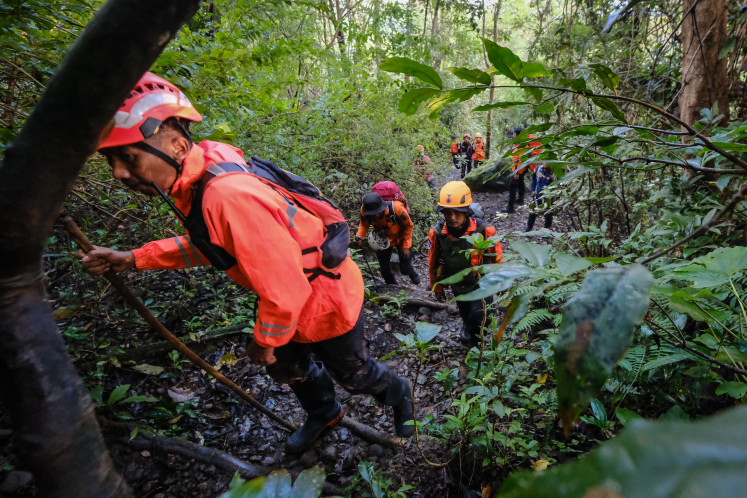Popular Reads
Top Results
Can't find what you're looking for?
View all search resultsPopular Reads
Top Results
Can't find what you're looking for?
View all search resultsCapital plans to have giant seawall completed in 2020
The city administration is planning to complete the Jakarta Coastal Defense Strategy (JCDS) in 2020, five years faster than its previous plan
Change text size
Gift Premium Articles
to Anyone
T
he city administration is planning to complete the Jakarta Coastal Defense Strategy (JCDS) in 2020, five years faster than its previous plan.
The project will likely skip the second phase so it will become more effective in solving Jakarta’s flooding problems caused by subsidence and rising sea levels. “We decided to skip the second phase because it’s a short-term solution that will only solve flooding problems in the Northern part of the city for around 10 years. To make it more effective, we will just proceed to the third phase,” said Nursyam Daoed, the head of facilities and infrastructure division at Jakarta Development Planning Board (Bappeda).
The first phase of the project includes construction of 47 polder systems in the northern part of Jakarta scheduled for completion by the end of the year. In the second phase, dikes integrated with coastal reclamation efforts, pumps and retention ponds would be built.
In the third phase, a giant seawall will be constructed in Jakarta Bay along with retention ponds and pumps with a capacity of 500 cubic meters per second. “If we skip the second phase, we can save up to five years, so the giant seawall can be complete by 2020,” Nursyam said.
Currently, JCDS is working on its feasibility study. The study, partly funded by the Dutch government, is expected to be finished next year.
The seawall would be erected off the Jakarta coast spanning 60 kilometers from Tangerang in the west of the city to Bekasi in the east.
The seawall is expected to protect the city from subsidence and rising sea levels. Besides rising sea levels due to global warming, subsidence in North Jakarta makes the area prone to floods.
Since 2002, subsidence in North Jakarta has been more than one meter. The area could sink below sea level in a decade. The JCDS findings show around 40 percent of land in Jakarta already below sea level.
Jan Jaap Brinkman, a hydrodynamic expert from Dutch research institute Deltare, said that the seawall was expected to stop land subsidence due to excessive use of groundwater because it would process water from the rivers flowing across Jakarta.










